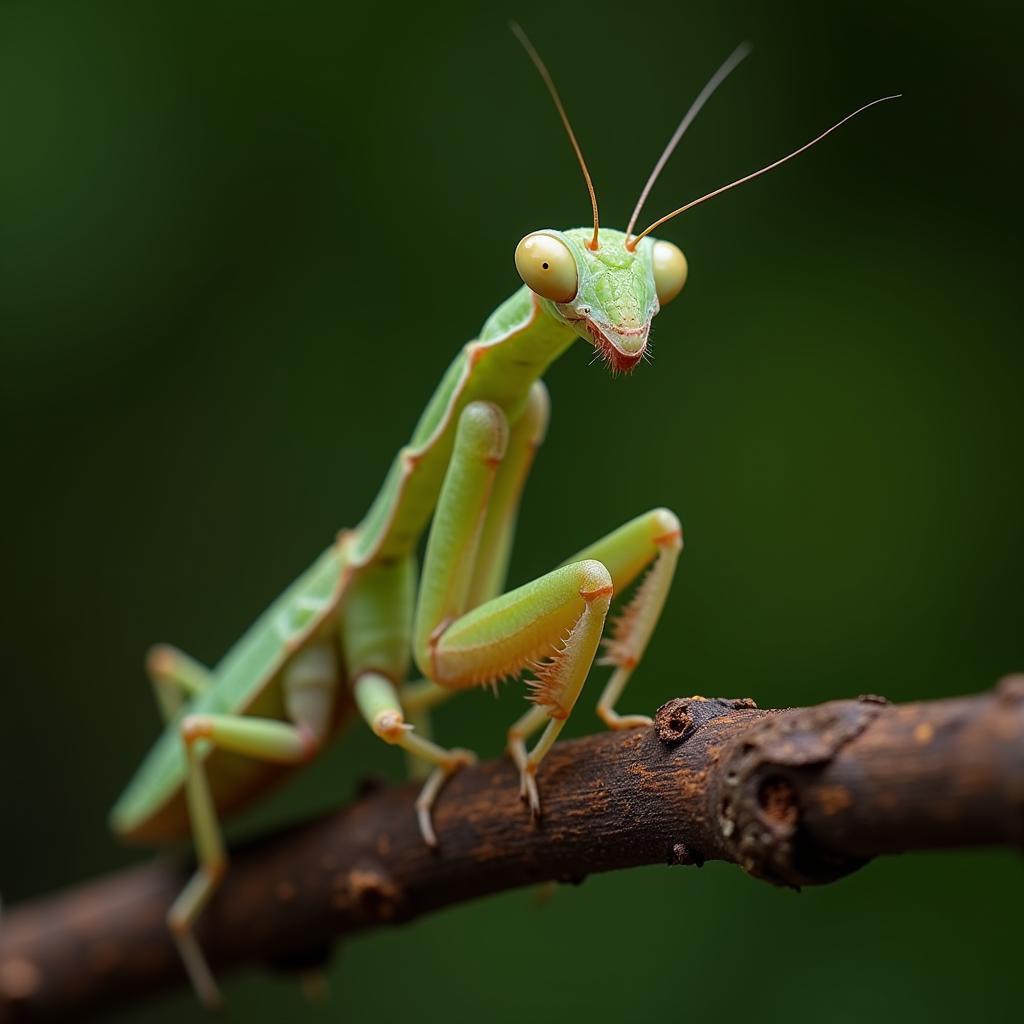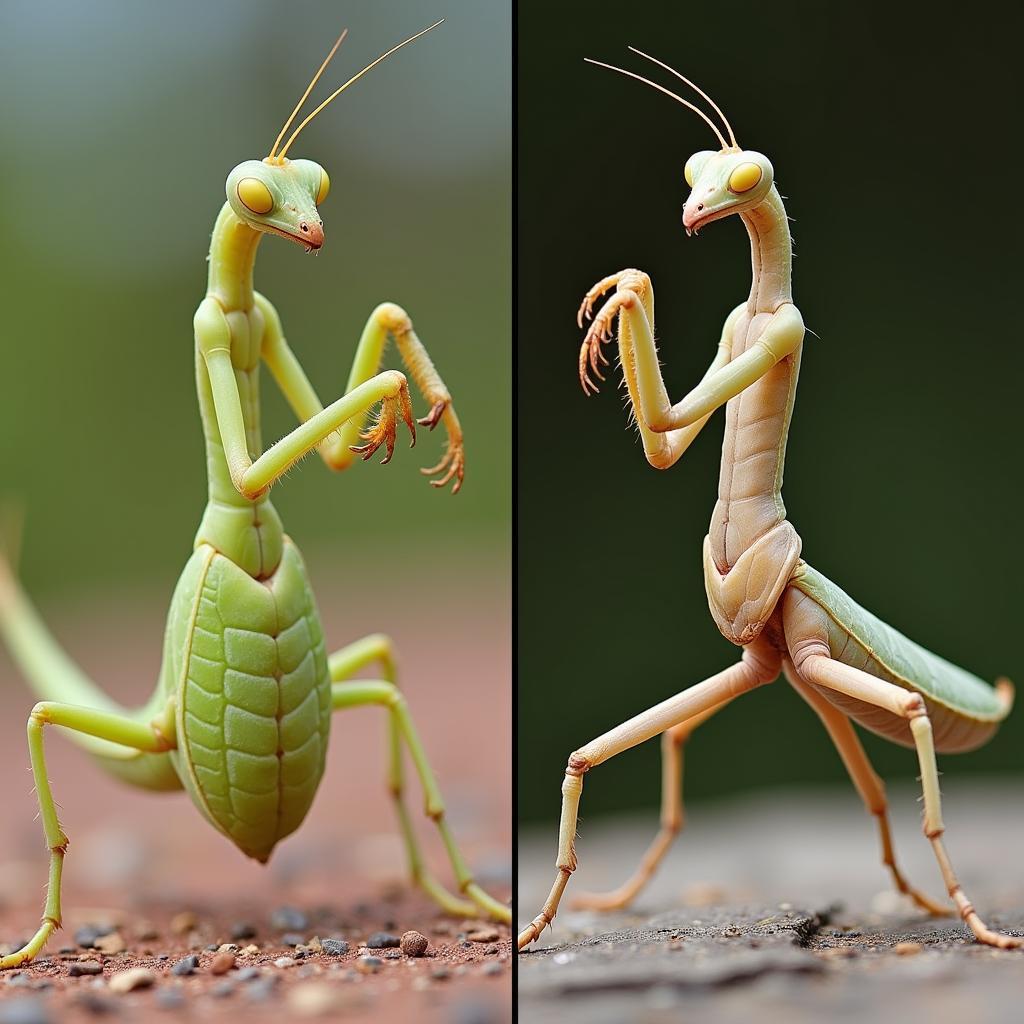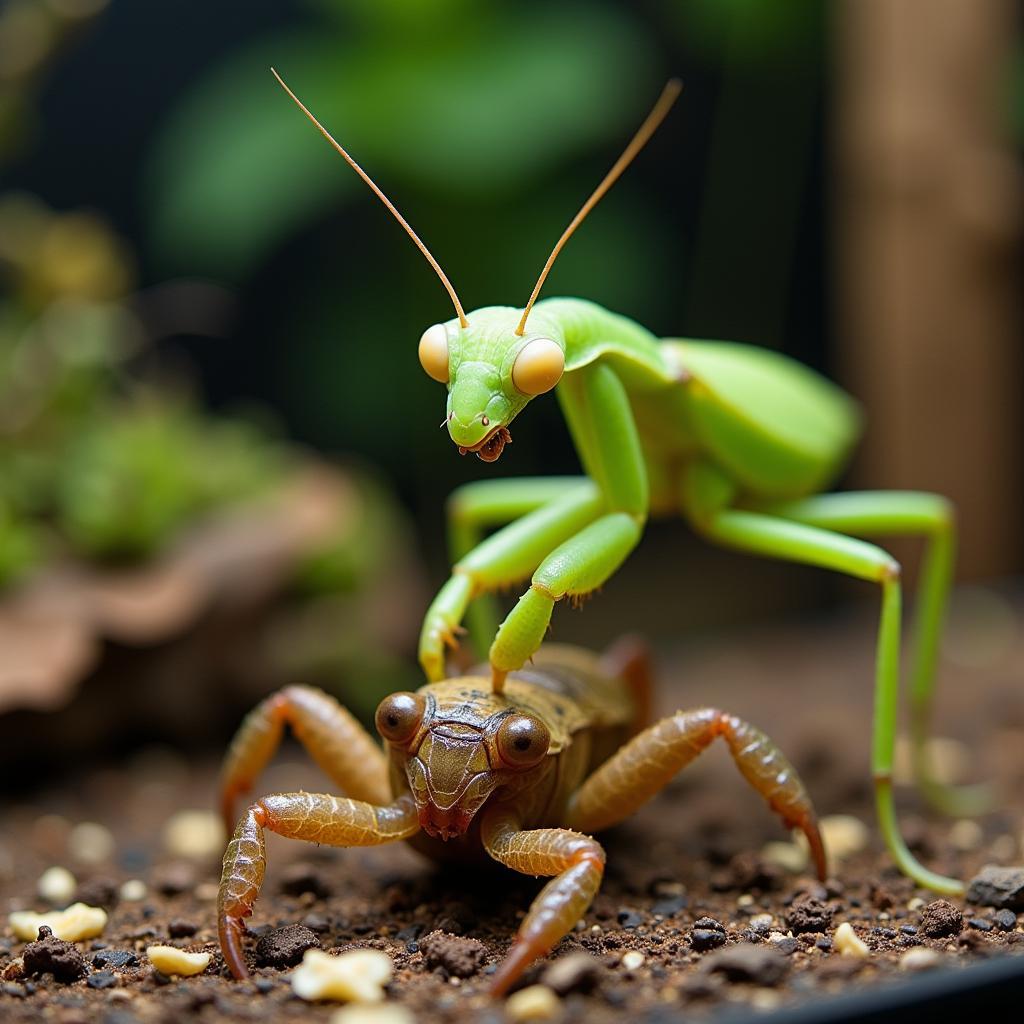Praying mantises are fascinating creatures, known for their predatory prowess and unique camouflage. One common question about these intriguing insects is, How Long Can A Praying Mantis Live Without Food? The answer, like many things in nature, isn’t always straightforward. It depends on several factors, including the mantis’s age, size, species, and overall health, as well as the surrounding temperature and humidity.
Factors Influencing a Praying Mantis’s Survival Without Food
Several factors play a crucial role in determining how long a praying mantis can survive without food.
Age and Size
Younger mantises, especially nymphs, have higher metabolisms and require more frequent feeding. They generally cannot survive as long without food as adult mantises. Larger, adult mantises, with their slower metabolisms and greater energy reserves, can typically endure longer periods of fasting.
Species and Overall Health
Different species of praying mantis have varying metabolic rates and natural lifespans. A healthy mantis in prime condition will naturally withstand food scarcity better than a mantis that is already weakened by illness or injury.
Environmental Conditions
Temperature and humidity also affect a mantis’s survival. Higher temperatures increase their metabolism, leading to faster depletion of energy reserves. Similarly, low humidity can dehydrate a mantis, further weakening it.
 Praying Mantis Survival Without Food
Praying Mantis Survival Without Food
How Long Can They Actually Go Without Eating?
While there’s no single definitive answer, a healthy adult praying mantis can typically survive for 1-2 weeks without food. Younger nymphs may only last a few days. However, it’s important to note that this is the maximum survival time under ideal conditions. In reality, a mantis deprived of food for an extended period will become weakened, less active, and more susceptible to disease.
Signs of Starvation
A starving mantis will exhibit certain behaviors, including reduced movement, lethargy, and a shrunken abdomen. It may also become more aggressive, even resorting to cannibalism if housed with other mantises.
 Signs of a Starving Praying Mantis
Signs of a Starving Praying Mantis
Best Practices for Feeding Your Praying Mantis
To ensure your pet mantis thrives, it’s essential to provide a consistent and appropriate diet. Feed your mantis live insects, such as crickets, flies, or moths, every 1-3 days, depending on its age and size. Avoid overfeeding, as this can lead to obesity and other health issues.
Ensuring a Healthy Environment
Maintaining the correct temperature and humidity levels is crucial for your mantis’s overall well-being. Research the specific requirements for your mantis species and provide a suitable enclosure with adequate ventilation.
“A well-fed mantis is a happy mantis,” says Dr. Emily Carter, entomologist and mantis expert. “Providing a consistent feeding schedule and a healthy environment are crucial for their long-term survival and well-being.”
 Feeding a Praying Mantis: Best Practices
Feeding a Praying Mantis: Best Practices
Conclusion
Understanding how long a praying mantis can live without food helps us appreciate the delicate balance of nature and the importance of proper care for these fascinating creatures. While they can surprisingly endure short periods of fasting, providing a regular food supply and a healthy environment is essential for their long-term survival. How long can a praying mantis live without food? It ultimately depends on you.
FAQ
- What do praying mantises eat? Praying mantises primarily eat live insects.
- How often should I feed my praying mantis? Feed your mantis every 1-3 days, depending on its age and size.
- Can I overfeed my praying mantis? Yes, overfeeding can lead to health issues.
- What are the signs of a starving mantis? Reduced movement, lethargy, and a shrunken abdomen are signs of starvation.
- How can I ensure a healthy environment for my praying mantis? Research the specific needs of your species and provide appropriate temperature, humidity, and ventilation.
- Do all praying mantis species have the same lifespan? No, different species have varying lifespans.
- How can I tell the age of my praying mantis? Determining the exact age can be difficult, but size and molting stages can provide clues.
For any further assistance or inquiries, please contact us at Phone Number: 02437655121, Email: minacones@gmail.com Or visit our address: 3PGH+8R9, ĐT70A, thôn Trung, Bắc Từ Liêm, Hà Nội, Việt Nam. We have a 24/7 customer support team.